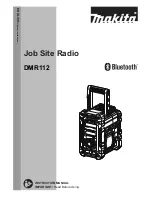
R S - 2 3 2 R A D I O M O D E M S
©
©
©
© RF Innovations Pty Ltd, 1998
Page: 7
223889, Revision 2.2
serial, binary and digital data. Communication is generally asynchronous and full duplex. Reliable
communication can be achieved up to 50 feet. The RS-232 transmitter sends logic 1 as -5 to -25 Volts and
logic 0 as +5 to +25 Volts. The hardware handshaking lines are used for interactive device control. The
lines used for handshaking are RTS (Ready to Send), CTS (Clear to Send), DTR (Data Terminal Ready) and
DCD (Data Carry Detect).
DTE versus DCE Conventions
This is one of the most misunderstood areas of RS-232. DTE stands for Data Terminal Equipment,
and DCE stands for Data Communications Equipment. DTE is typically either a dumb terminal or the
serial port on a computer/workstation. DCE is typically a modem or other piece of data communications
equipment. Where it gets confusing is when you start to talk about signal definitions and direction. For
example, it's easy for someone to understand that when you transmit data, you send it out. However, when
you talk in terms of the DCE, it becomes an input. This is because the specification was written from the
perspective of the DTE end of the link. Another example is that the Receive Data signal is an input to
DTE, but an output from DCE. Refer to Figure 2-3 for a visual understanding. Radio modems can perform
the function of both DTE and DCE
Figure 2-3 DTE and DCE Conventions for RFI-9256










































